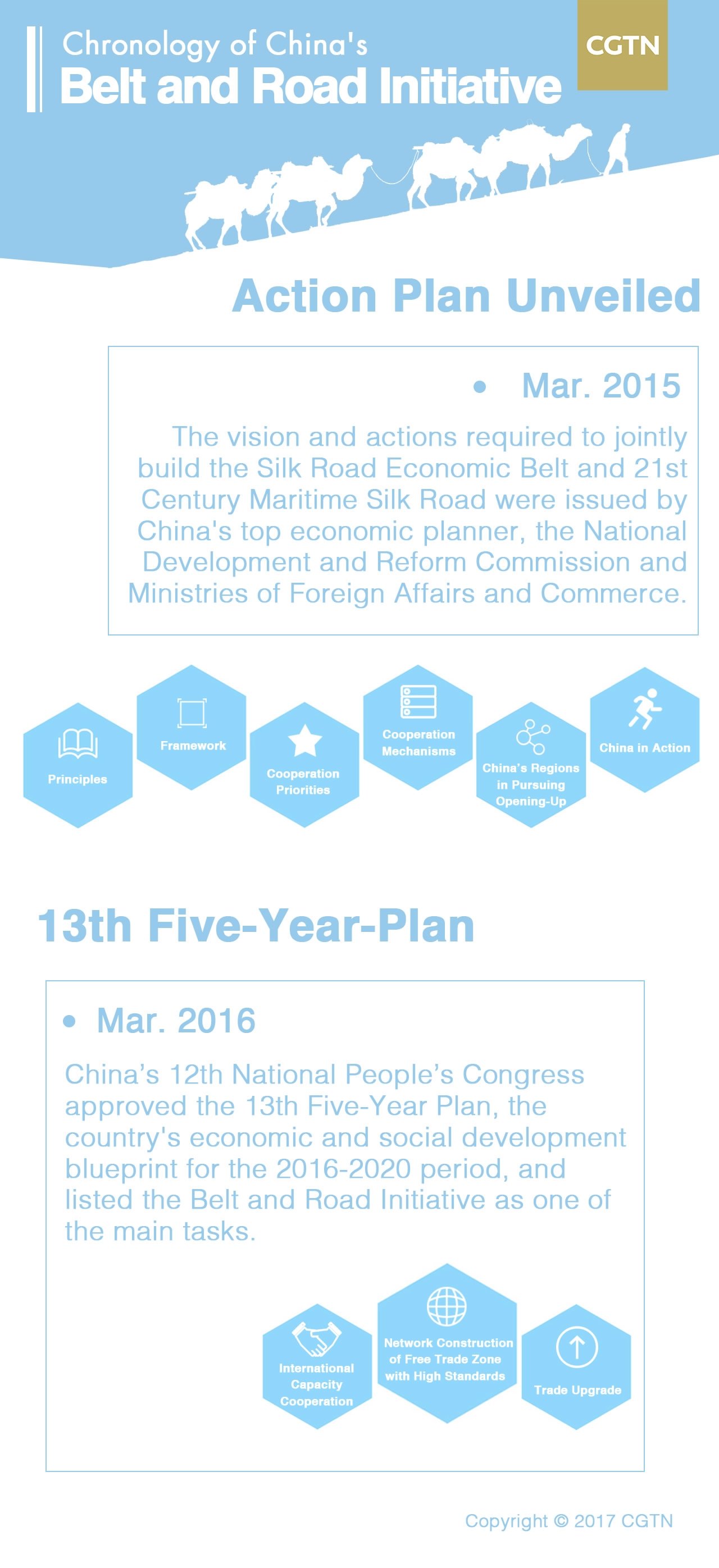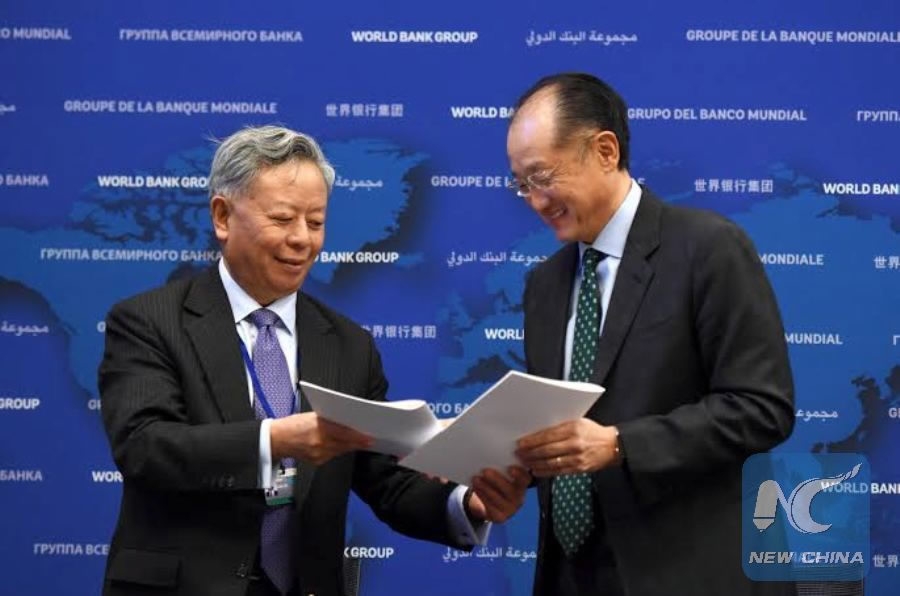China’s Belt and Road Initiative has attracted a host of participants and prompted interest from around the world since it was proposed by President Xi Jinping in the fall of 2013.
Infrastructure spending and modernization of transport routes under the framework of the Belt and Road are already under way, with China investing more than 50 billion US dollars in countries along the reinvigorated ancient routes since 2013.
The project has won support from over 100 countries and international organizations, and nearly 50 cooperation agreements have been signed between China and various governments.
Why has the initiative attracted such a positive response? And what are the factors underlying this optimism?
China puts Belt and Road center stage
The Silk Road Economic Belt and the 21st Century Maritime Silk Road concepts were unveiled by President Xi in September and October 2013 respectively, and were quickly adopted as centerpieces of the country’s planning.
A few short months later, in December 2013, the Belt and Road Initiative was prioritized as one of China’s three biggest national strategies.

CGTN Photo
In March 2015, Vision and Actions on Jointly Building the Silk Road Economic Belt and 21st Century Maritime Silk Road was issued by China's top economic planner, the National Development and Reform Commission and Ministries of Foreign Affairs and Commerce. This outlined the Belt and Road Initiative’s framework, key areas of co-operation and co-operation mechanisms.
In March 2016, China’s 12th National People’s Congress approved the 13th Five-Year Plan, the country's economic and social development blueprint for 2016-2020, and listed the Belt and Road Initiative as one of the main tasks.
Momentum behind the project has not let up, and the upcoming Belt and Road Forum in Beijing will bring together national and business leaders from around the world to push the initiative forward.
A coordinated, multilateral plan
The Belt and Road Initiative has been intertwined with existing development strategies of many countries along the routes.
China has pledged to build a grand program through consultation to meet the interests of all. Strategic alignment with participating countries and regions is essential, and effort to achieve such alliances has helped rapidly advance the initiative.
Kazakhstan, where Xi first proposed the Silk Road Economic Belt concept, has an existing development policy named the Bright Path new economic plan. It aims to promote infrastructure, especially large-scale construction transportation projects to stimulate the economy.
On September 2, 2016, China and Kazakhstan agreed to link the Silk Road Economic Belt to the Bright Path. The integration was intended to boost bilateral cooperation in a wider range of areas and consolidate the implementation of both strategies.
Besides Kazakhstan’s Bright Path, the Belt and Road Initiative is linked with Russia’s Eurasian Economic Union project, Mongolia’s Steppe Road, the UK’s Northern Powerhouse, South Korea’s Eurasian Initiative, Vietnam’s Two Corridors and One Ring, Australia’s northern region development plan, ASEAN’s Interconnection Master Plan, and Poland’s Amber Route.
During the meeting between Xi and his US counterpart Donald Trump from April 6 to 7 at Mar-a-Lago resort in Florida, Xi told Trump that China would welcome US participation in the Belt and Road Initiative.
A solid financial underpinning
The Asian Infrastructure Investment Bank (AIIB) and the Silk Road Fund, the two sources of funding established to provide financial support to projects associated with the Belt and Road Initiative, are crucial for countries along the routes that need capital for connectivity and infrastructure development.

CGTN Photo
The AIIB, the first China-initiated multilateral financial institution, has committed over two billion US dollars since it opened for business in January 2016. On March 23, AIIB welcomed 13 new prospective members, bringing the bank’s total approved membership to 70.
Despite initial uncertainty as to whether the AIIB would operate in competition with the World Bank and the Asian Development Bank (ADB), the institution was not designed to replace any existing financing institutions. In fact, the AIIB has acted in cooperation with other multilateral development banks.

Asian Infrastructure Investment Bank President Jin Liqun and World Bank Group President Jim Yong Kim (R) exchange documents after signing the first co-financing framework agreement at the headquarters of World Bank in Washington DC on April 13, 2016. /Xinhua Photo
Infrastructure projects are large, and for one bank to spend two billion or three billion US dollars on one scheme is a major risk.
Jin Liqun, AIIB president, has repeatedly stated that the AIIB is not a rival to the World Bank, the ADB or other existing multilateral development banks, but is interested in cooperation and coordination between bodies.
The other key financing arm supporting the initiative is the Silk Road Fund. It was launched to “break the bottleneck in Asian connectivity by building a financing platform”, Xi said when pledging 40 billion US dollars to the fund on November 8, 2014.

CGTN Photo
The Silk Road Fund provides investment and financing mainly through equity investment with Chinese and international enterprises and financial institutions.
The Fund is backed by China’s state-owned institutions, but it works according to market principles and aims to ensure reasonable returns on investments.









